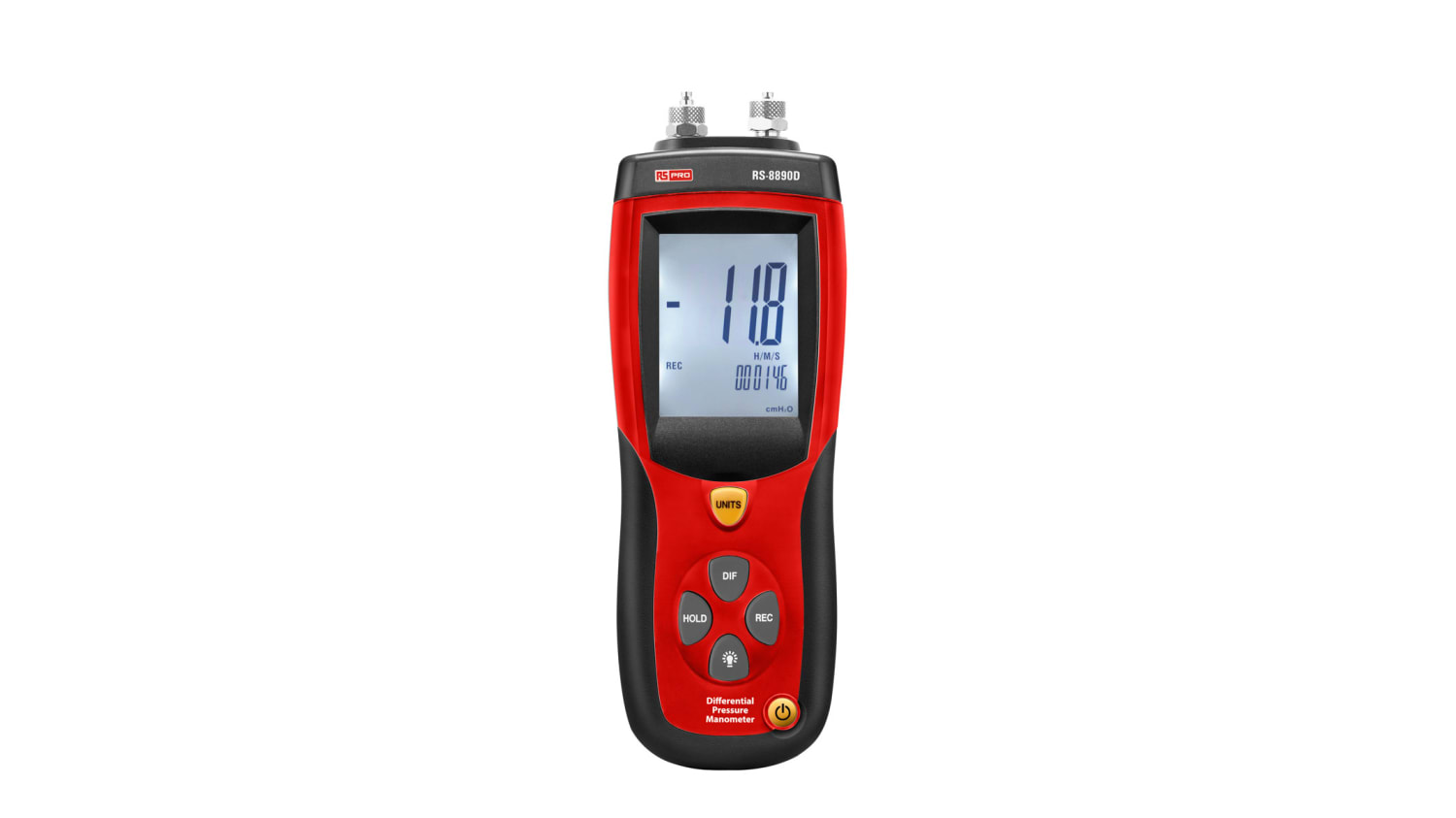5 Quick Tips for Using Manometers

Manometers are precision tools used to measure pressure. Pressure is the force applied by a gas or liquid per unit surface area because of the impact of the weight of that particular gas or liquid due to gravity. Manometers can be programmed to measure different pressure values depending on their type and configuration. An example of a common manometer is a device used by physicians and medical professionals to measure and monitor a patient’s blood pressure. This type of manometer is known as a sphygmomanometer.
What is Pressure?
Pressure measures the amount of force (F) exerted per unit area (A): P=F/A. Therefore, the unit of measure for pressure is a force value divided by a squared distance value. The metric unit of measure for pressure is Newtons/(meter)2, known as a Pascal (Pa). Other standard pressure units of measure are pounds per square inch (psi), millibars, atmospheres (atm), millimetres of mercury (mm Hg), and inches of water (in H2O).
Pressure can be represented in terms of three specific categories:
- Absolute pressure
- Gauge pressure
- Differential pressure
Types of Manometers
Manometers are broadly classified into two – analog manometers and digital manometers.
Analog Manometers
Analog manometers use the fluid within a U-shaped tube and operate under the principle of Hydrostatic Balance. It means that the fluid in the tube will settle to equal height in each leg of the tube when both ends are open to atmospheric pressure. But, if positive pressure is applied to one of the legs of this tube, then the level of liquid will fall in that leg and rise in the other leg.
Digital Manometers
Digital manometers, or electronic manometers, do not rely on the Hydrostatic Balance of fluids to determine pressure. Instead, they use a pressure transducer to convert an observed pressure level into an electrical signal whose characteristic value is proportional to the magnitude of the pressure. The elastic portion of the transducer deflects under pressure. That deflection is then converted to a value of an electrical parameter that is detected and calibrated to a pressure reading.
Five Quick Tips for Using a Digital Manometer
Install New Batteries – use new batteries before checking pressure readings with a digital manometer, especially if you use it after a long time.
Mandatory Zero Adjustment – always use the restore toggle or zero toggles to bring the display back to null, and it will eliminate potential errors and discrepancies away.
Measure Static Pressure – measure the static pressure to find a positive or negative pressure. If the pressure is more than atmospheric pressure, it will be positive, and pressure below atmospheric pressure is negative.
Use the Backlight Feature – use the backlight feature to read the pressure accurately in poorly lit or dark areas.
Use the Memory Feature – digital manometers can record multiple pressure readings and store them in memory, and it is beneficial if you need a series of readings.
Uses of Manometers
Manometers are used in various industries to measure pressure and flow rate. Some common uses are for:
- HVAC systems maintenance
- Meteorological and weather conditions monitoring
- Gas pressure monitoring
- Fluid flow measurements
- Physiological measurements such as blood pressure
- Monitoring compressor systems operations
Get Manometers at Great Prices
If you are looking for high-quality manometers at reasonable prices, click here.







